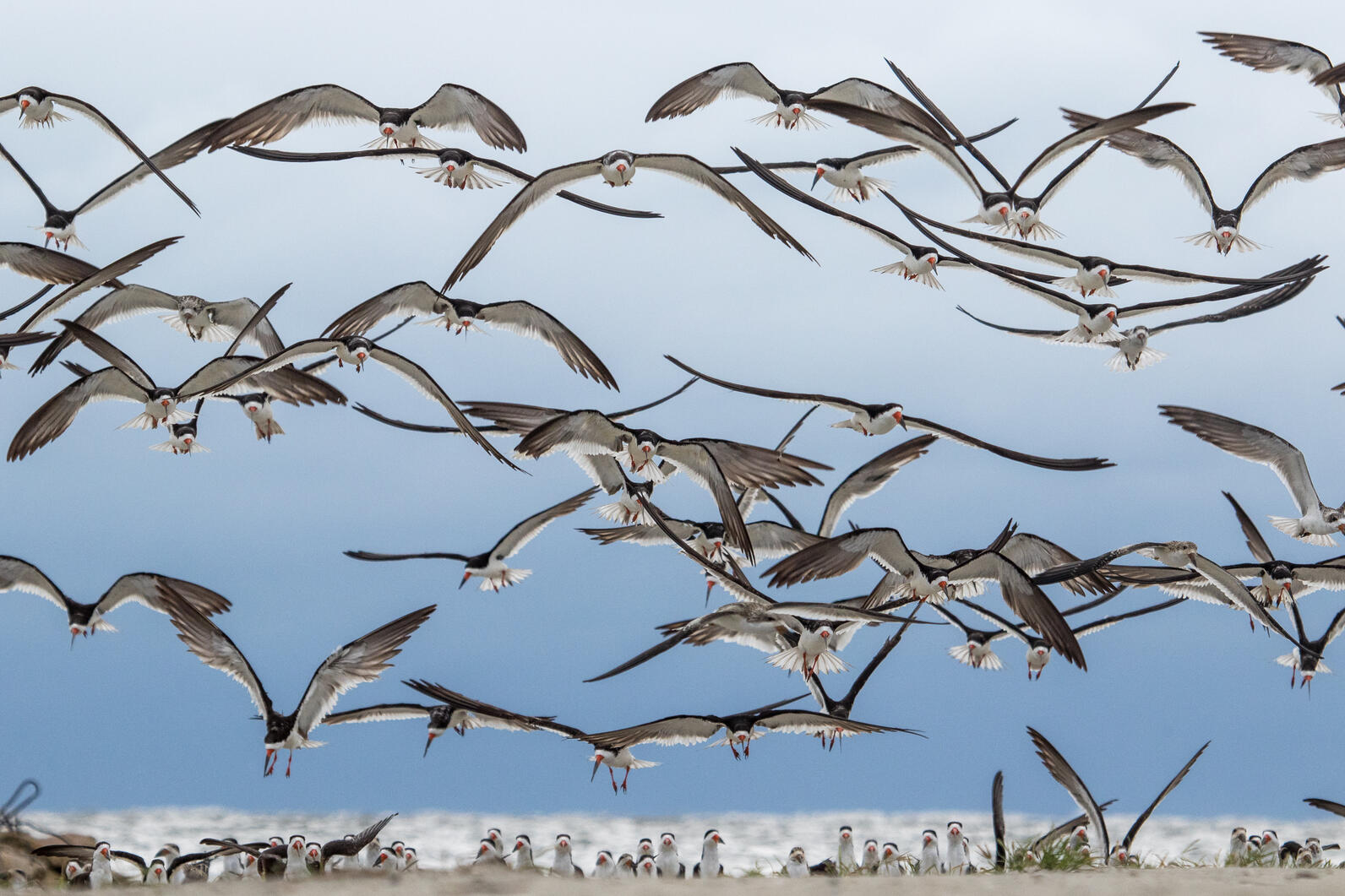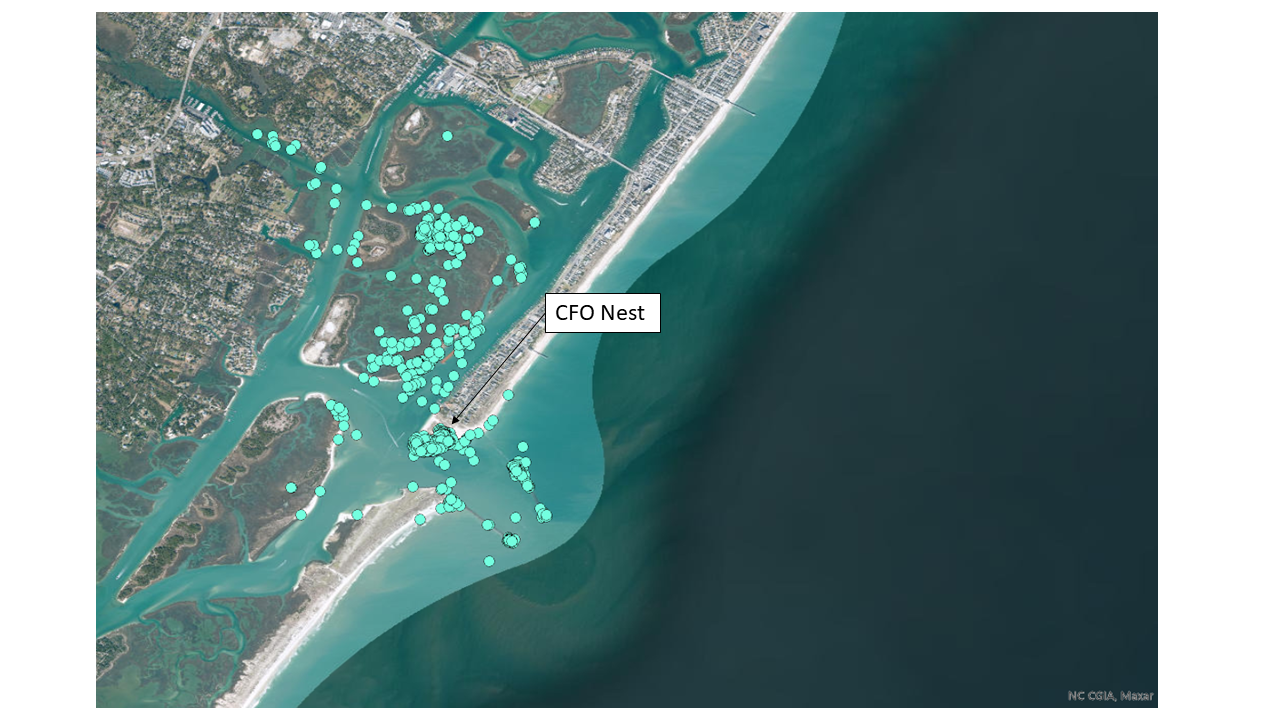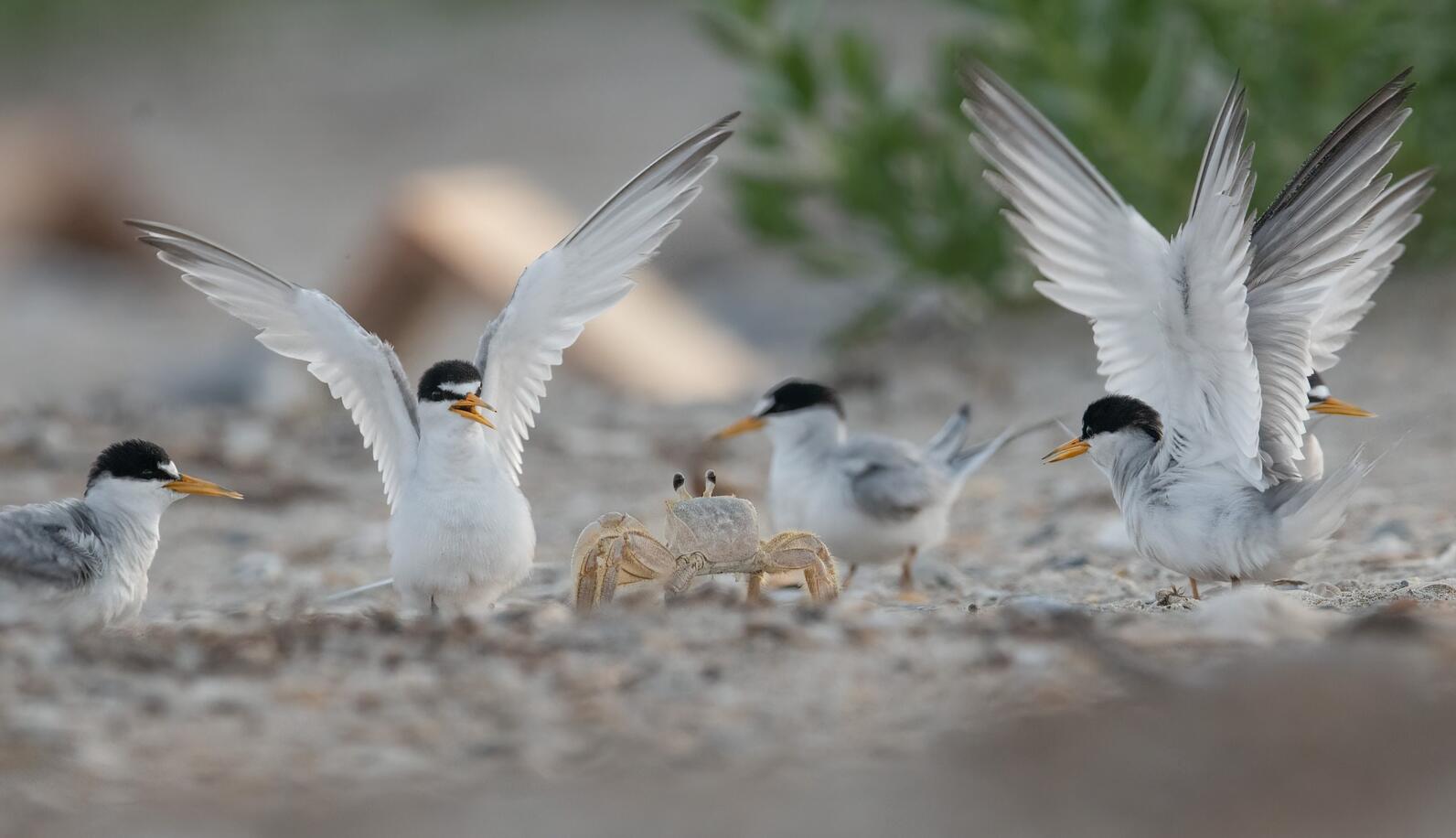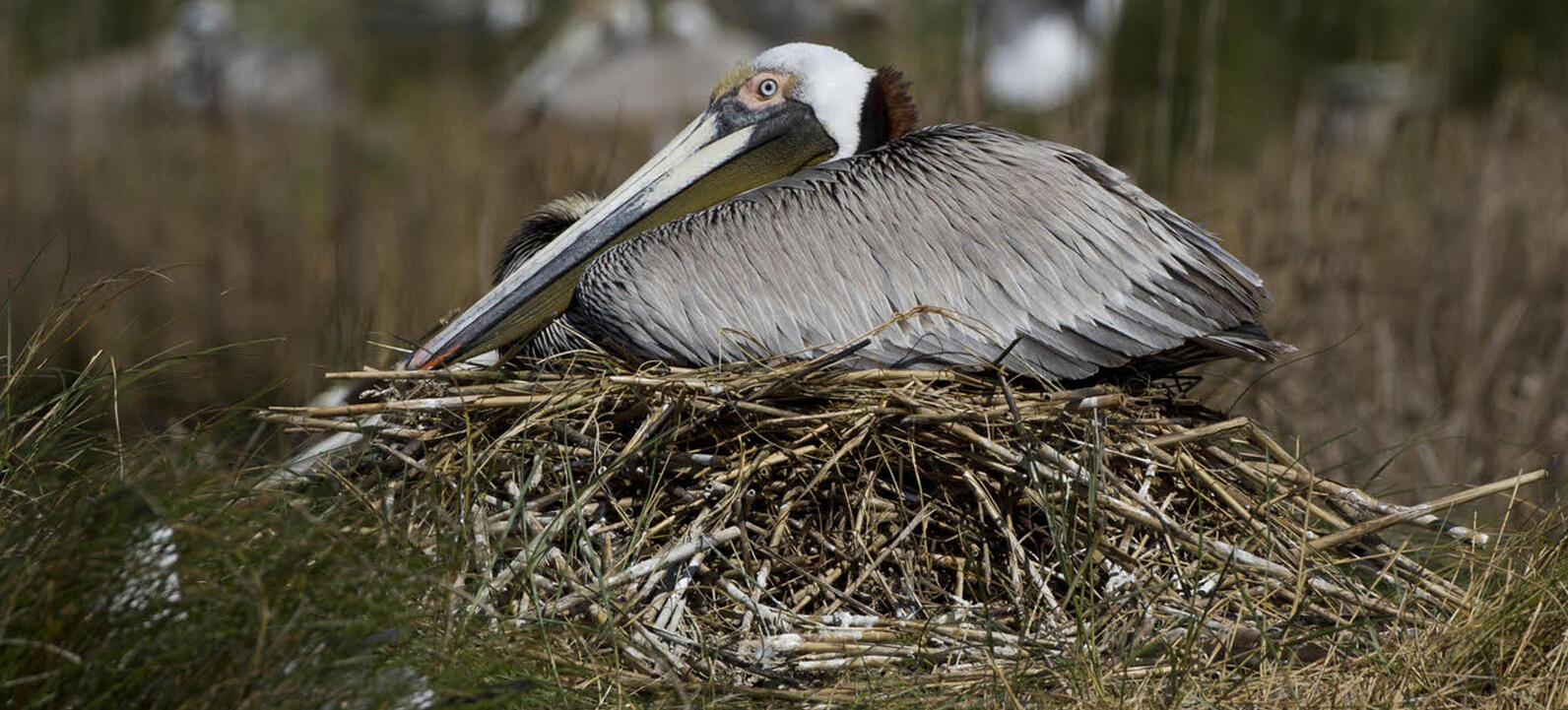It was a summer of firsts for many of the birds nesting on North Carolina’s coast and the Audubon biologists who study and protect them. Meanwhile, coastal nesting birds faced a number of challenges, from early storms to persistent predation. Some colonies rebounded to fledge a large number of chicks, others just did so-so.
All told, year after year, Audubon North Carolina’s coastal sanctuaries provide safe breeding grounds for 40 percent of the state’s coastal nesting waterbirds. These species—skimmers, terns, pelicans, and much more—already face threats from coastal development, rising seas, and human disturbance. Audubon’s on-the-ground management ensures birds continue to have safe places to raise their young.
This year, we also had the help of a RECORD 57 volunteer Wrightsville Beach Bird Stewards, who spent a combined 3,300 hours monitoring the sanctuary and educating the public at the south end of the island.
As the weather cools (fingers crossed!) and September winds down, it’s time to look back at how birds fared this nesting season. Read on for the full recap.

Skimmers Claim New Territory
In the spring, Audubon and the Army Corps of Engineers wrapped up a massive restoration project at Ferry Slip Island, using dredged sand to nearly double its size after years of erosion. Within weeks of completing the project, nesting birds began to return, including a pair of Black Skimmers. The pair was the first to nest on the river in a decade and fledged two of its three chicks.
At the Lea-Hutaff Island sanctuary, just north of Figure Eight Island, skimmers similarly scoped out new territory on the Hutaff end of the site. A small colony of 22 pairs nested on the undeveloped island’s open sand. The colony suffered from raccoon and coyote predation, but still fledged two chicks, one of which we banded. Improved predator management in 2023 will help increase their chances of success.
Skimmers don’t colonize new areas as readily as other beach-nesting species, such as Least Terns. It may be that this year’s pioneering birds ran out of room at our sanctuary at the south end of Wrightsville Beach, which once again hosted a large, healthy colony of skimmers. The colony totaled about 120 pairs and fledged over 150 chicks—good numbers at an important stronghold for the species.
Overall, it’s a good sign that skimmers have other quality habitat to turn too to avoid putting “all their eggs in one basket,” as the saying goes. And, we’re already getting reports of our 2022 chicks appearing at other sites from Pea Island National Wildlife Refuge to the NC Coastal Reserve’s Masonboro Island.
Bird Science on the Coast
We completed the second year of our American Oystercatcher datalogger project with researcher Kate Goodenough, a PhD candidate at the University of Oklahoma.
This summer, we recaptured birds that we tagged last summer and attached GPS devices to another eight oystercatchers. The devices help us track the birds’ fine scale movements. The end goal is to get a better understanding of how oystercatchers use habitat during their breeding season. Where do they spend most of their time? How far do they have to travel to forage, and how does this impact the health of their chicks?
Ultimately, the research should help us better understand how to protect and manage the places that oystercatchers need to thrive.

Ghost Crab Research
We also launched a new predator control research project this summer, with funding from North Carolina SeaGrant, investigating whether ghost crab management can help reduce their presence and predation of American Oystercatcher nests.
These sand-colored crustaceans are abundant and opportunistic predators, chowing down on anything within claw’s reach—from leftover watermelon rinds to newborn birds. We believed crabs were part of the reason that oystercatchers fared poorly on Hutaff Island last year. Nests were lost just as they hatched and the most likely culprits were the voracious crabs.
The research will take several years, but early indications are that yes, targeted trapping and removal of ghost crabs within the vicinity of nests can diminish the local population and in turn help young chicks survive.

Pelicans, Terns, and Oystercatchers
Overall, the breeding season was a mixed bag for birds across Audubon’s sanctuaries. Because the state-wide colonial waterbird census doesn’t take place until next year, we don’t have total numbers for all bird species, except for those we count ourselves (skimmers, oystercatchers, Least Terns, and a few others). But because we’re outside monitoring our sanctuaries every day, we have a good idea of how different species and colonies weathered the summer.
On the Cape Fear River, Brown Pelicans thrived, establishing a large colony at Battery Island. The island regularly hosts large numbers of White Ibis. The ibis were there this spring and summer, but in fewer numbers. This may be because the pelicans took up more space, and some ibis sought out breeding grounds at freshwater wetlands in Brunswick County.

Besides skimmers, Ferry Slip Island also hosted oystercatchers. Thirteen pairs established nests, fledging nine chicks. The Cape Fear River continues to be one of the most important places in the state for breeding oystercatchers, hosting about 100 pairs most years, or a quarter of all breeding oystercatchers in North Carolina. As sea levels rise, protecting and restoring their habitat only becomes more important.
Down the river from Ferry Slip is South Pelican Island, which hosted a huge Royal and Sandwich tern colony, estimated at some 3,000 pairs. We’ll get a firm count during next year’s state-run colonial waterbird census. The river terns are typically successful in fledging thousands of chicks and 2022 was no exception.
At Lea-Hutaff Island, 431 pairs of Least Terns nested in several colonies, mainly around the north and south ends of the island. Predation was a problem at the site throughout the breeding season, but they were still able to fledge over 100 young. Also on the island were 42 pairs of Wilson’s Plovers, making it one of the more important sites for them in the state.
Turtles nesting at the island faced fewer hurdles. We hosted 14 loggerhead sea turtle nests (up from 12 last year), and all have hatched successfully. This year, none were affected by storm surge or high tides, a common threat that can inundate and destroy eggs before they hatch.
At Beacon Island in Pamlico Sound, our farthest flung sanctuary, the Brown Pelican colony took a beating during a strong Mother’s Day storm in May. The colony was essentially wiped out, but the pelicans returned to nest again and fledge chicks, demonstrating the value of persistence.









